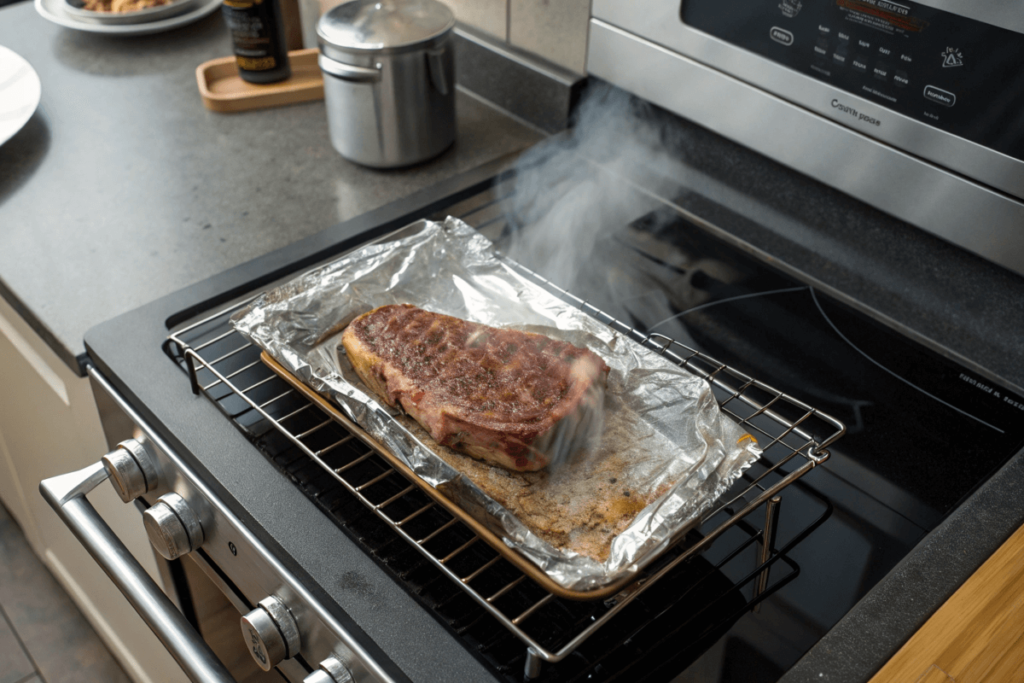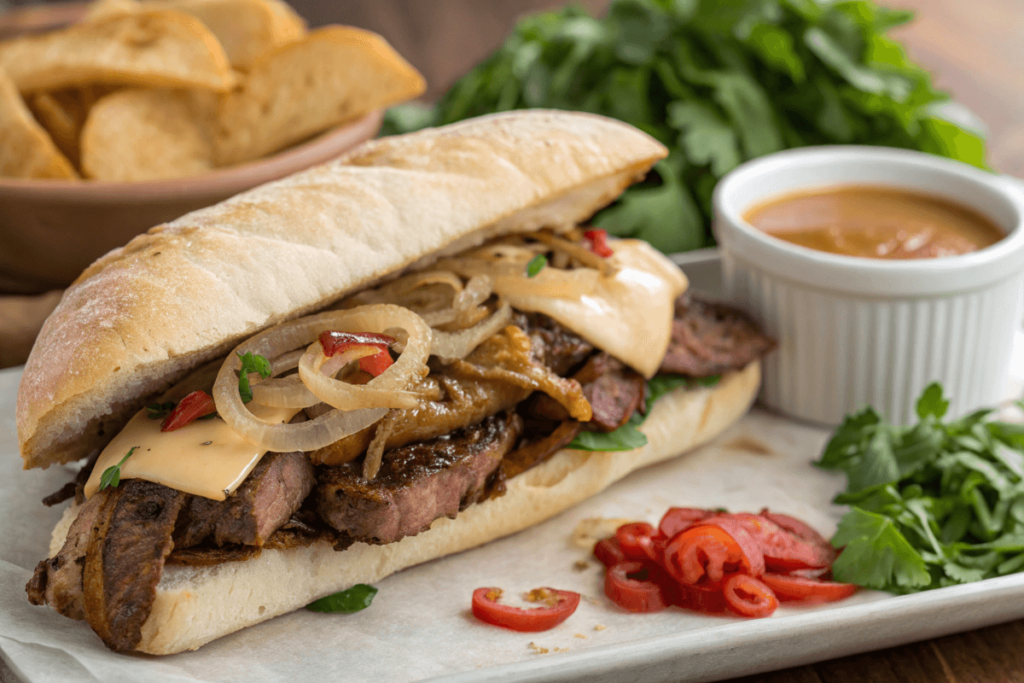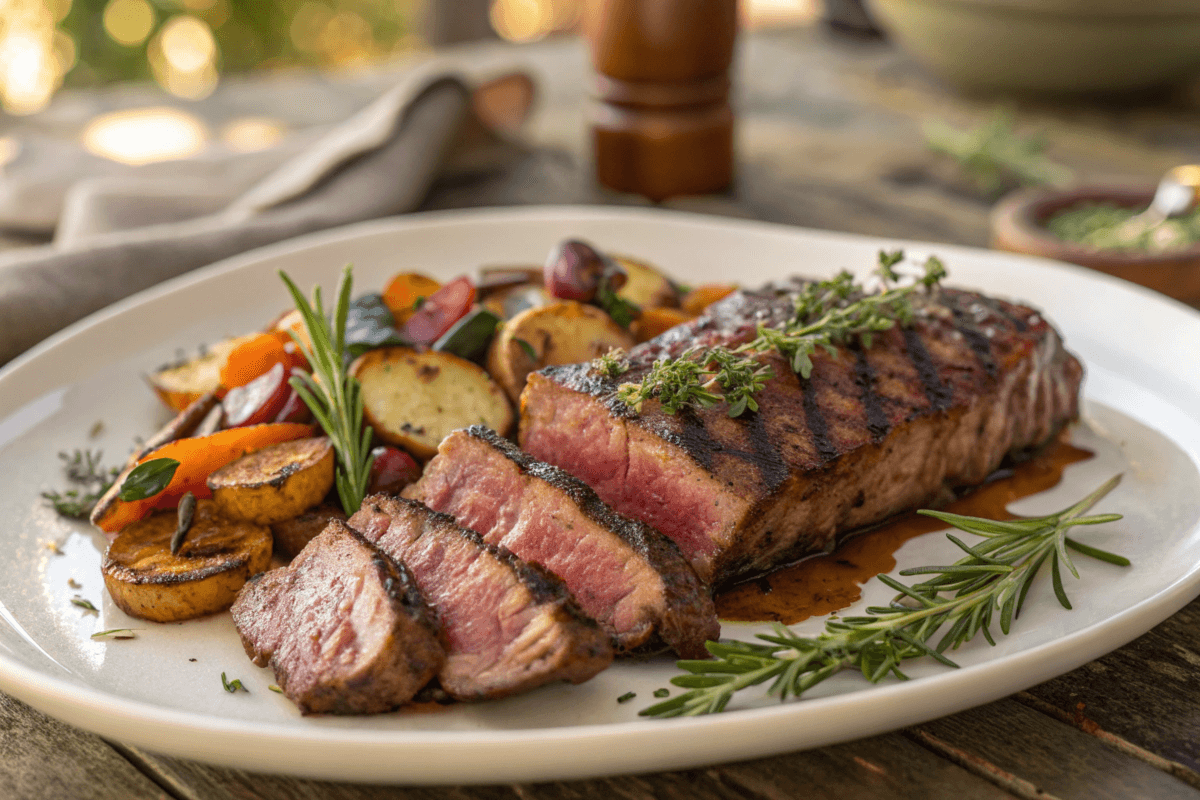How to Make Leftover Steak Tender
Leftover steak often loses its tenderness, leaving you wondering if it’s even worth saving. Don’t toss it just yet! There are smart, simple ways to revive your steak, bringing back its juicy, tender texture. This guide dives into why leftover steak becomes tough, how to reheat it properly, and creative ways to reuse it. With the right techniques, you’ll love your leftovers as much as the first bite. Let’s get started!
Understanding Why Leftover Steak Becomes Tough
What Happens to Steak Fibers During Cooking?
When steak cooks, its proteins contract, and moisture escapes. This process is part of what makes a freshly cooked steak juicy yet firm. However, overcooking or high heat can cause the fibers to tighten too much, turning your steak chewy or tough.
In leftovers, the contraction continues as the meat cools, making it even drier. The key to reversing this lies in understanding the science behind those pesky steak fibers.
Impact of Refrigeration on Texture
After cooking, steak doesn’t stop changing. Refrigeration locks in its structure, but at the cost of tenderness. As it cools, fats solidify, and natural juices settle into the muscle fibers, leaving the meat tougher to chew.
A pro tip? Proper storage can minimize the damage. Wrapping the steak tightly or storing it with moisture-rich ingredients (like a splash of beef broth) can help preserve its texture.
Signs Your Steak Needs Tenderizing
Not all leftovers are created equal. Here’s how to tell if your steak needs tenderizing:
- Dry appearance: Does it look like it’s lost its sheen?
- Rubbery texture: Cutting through feels tougher than before.
- Lack of flavor: Over-dried steak often tastes dull.
Understanding these signs makes it easier to choose the right tenderizing method. In the next section, we’ll explore prepping tips to avoid this problem altogether.
Preparation Tips Before Reheating Leftover Steak
Proper Storage to Preserve Quality
The key to making leftover steak tender begins long before reheating. Proper storage preserves the meat’s natural moisture and texture. Wrap the steak tightly in aluminum foil or plastic wrap and place it in an airtight container. Adding a dash of beef broth or olive oil before sealing helps lock in moisture.
For freezing, use freezer-safe bags and remove as much air as possible. This prevents ice crystals from forming, which can ruin the steak’s fibers. Always label the container with the date to track freshness.
Defrosting Frozen Steak: Best Practices
Defrosting correctly ensures the steak reheats tender and flavorful. Avoid microwaving frozen steak as it can dry out the meat. Instead, transfer the steak to the refrigerator overnight for slow thawing.
If you’re short on time, place the sealed steak in a bowl of cold water. Change the water every 30 minutes to speed up the process without sacrificing quality.
Prepping the Steak for Tender Reheating
Before reheating, let the steak sit at room temperature for 20-30 minutes. This reduces the risk of uneven heating and tough edges. Brush the steak with melted butter or drizzle olive oil over it to create a protective layer that keeps the meat juicy.
Consider adding herbs, spices, or a splash of soy sauce during this step to enhance flavor. With the right prep, your steak will be on its way to tender perfection.
Relevant Internal Link: Check out How to Reheat Steak Without Losing Flavor for additional techniques.
Best Methods for Making Leftover Steak Tender
Reheating in the Oven for Even Results

Using the oven is one of the best methods to ensure leftover steak stays tender. Preheat the oven to 250°F (120°C). Place the steak on a wire rack set over a baking sheet to allow air circulation. Cover loosely with foil to prevent moisture loss.
Heat the steak for 20–30 minutes or until the internal temperature reaches 110°F (43°C). This “low and slow” method ensures even heating, preserving the steak’s juiciness.
Using Sous Vide for Ultimate Tenderness
Sous vide is a foolproof way to reheat steak to its original tenderness. Seal the steak in a vacuum bag and immerse it in a water bath heated to 130°F (54°C) for medium-rare. Let it warm for 20–40 minutes, depending on thickness.
This gentle cooking method evenly distributes heat while retaining natural juices, making it ideal for high-quality cuts.
Pan-Seared Reheating with a Tenderizing Twist
For a quick solution, pan-searing works wonders. Heat a non-stick skillet over medium heat and add a pat of butter. Sear each side of the steak for about 1 minute, spooning the melted butter over it.
To avoid overcooking, use a meat thermometer to monitor the temperature closely. Pair the steak with a sauce for added moisture.
The Role of Moisture: Beef Broth, Butter, and More
Adding moisture-rich ingredients is crucial for keeping steak tender. During reheating, place a small dish of water or beef broth in the oven to create steam. When pan-searing, baste the steak with butter, garlic, and fresh thyme.
Moisture not only enhances tenderness but also boosts flavor, making every bite as satisfying as the first.
Relevant Internal Link: Explore What is the Best Way to Heat Up Leftover Steak? for detailed steps.
Creative Recipes to Transform Leftover Steak
Steak Sandwiches and Wraps: Keeping It Juicy

If you’re wondering how to make leftover steak tender and flavorful, sandwiches and wraps are fantastic options. Thinly slice your steak against the grain to preserve tenderness. Layer it on toasted ciabatta bread with caramelized onions, melted cheese, and a dollop of horseradish sauce for a quick steak sandwich.
For wraps, combine sliced steak with fresh greens, diced tomatoes, and a creamy dressing. The combination of textures keeps every bite moist and satisfying. Don’t forget to warm the wrap lightly for a cohesive flavor.
Salads with Sliced Steak: Adding a Tender Touch
Leftover steak is perfect for salads, adding protein and flavor. Cut the steak into thin strips, and toss it with fresh ingredients like arugula, cherry tomatoes, and avocado. To maintain tenderness, let the steak reach room temperature before mixing it with your salad.
Drizzle the dish with balsamic vinaigrette or a soy-based dressing to enhance the flavors. The acidity not only complements the steak but also helps keep it juicy.
Tacos, Stir-Fries, and Rice Bowls: Creative Reuse
For a fun twist, use leftover steak in tacos or stir-fries. For tacos, reheat thin slices in a skillet with taco seasoning, then serve on soft tortillas with shredded lettuce and sour cream.
In stir-fries, cook the steak with vegetables like bell peppers and broccoli. Add soy sauce or teriyaki for a savory punch. For rice bowls, layer the steak over fluffy rice, and add sautéed veggies and a drizzle of spicy mayo.
Suggestion: For more delicious recipes, check out our recipe collection.
Avoiding Common Mistakes
The Microwave Trap: Why It Dries Out Steak
One of the biggest mistakes when reheating steak is using a microwave. High heat zaps the moisture out of the meat, leaving it dry and rubbery. If you’re in a hurry, microwave the steak in short bursts with a damp paper towel covering it. Still, avoid relying on this method unless you absolutely have to.
Overcooking During Reheating
Overcooking is another common culprit behind tough leftover steak. To avoid this, always monitor the steak’s temperature while reheating. Use a meat thermometer to ensure you don’t go beyond the recommended 110°F (43°C) for reheating.
Cooking over low heat for a longer time helps retain moisture, so resist the urge to rush the process.
Slicing Before Reheating: When and Why to Avoid
While slicing steak can speed up the reheating process, it often causes the meat to dry out faster. It’s best to keep the steak whole until after reheating. Then, slice it thinly against the grain to maintain tenderness.
If you must slice beforehand, reheat the steak with added moisture, like beef broth or a light sauce, to prevent it from becoming tough.
Suggestion: Explore What is the Best Way to Heat Up Leftover Steak? for reheating tips and tricks.
Frequently Asked Questions
How Can I Keep Leftover Steak Moist During Reheating?
Keeping steak moist during reheating can be tricky, but it’s entirely possible with the right methods. For instance, adding moisture is key to making leftover steak tender. When using an oven, place a small bowl of water or beef broth inside to create steam. This prevents the steak from drying out as it heats.
If you’re reheating in a skillet, baste the steak with butter or olive oil. Not only does this lock in moisture, but it also enhances the flavor. Alternatively, when using a microwave, always cover the steak with a damp paper towel to minimize moisture loss.
Is Reheating Steak Safe?
Yes, reheating steak is completely safe as long as proper storage has been maintained. First, ensure that leftover steak is refrigerated within two hours of cooking to avoid bacteria growth. Then, consume the leftovers within three to four days to ensure freshness.
When reheating, use a thermometer to ensure the steak is warmed evenly without overcooking it. By monitoring the temperature closely, you can avoid making the steak tough or dry.
What Are the Best Sauces for Leftover Steak?
Adding sauces is a fantastic way to revive leftover steak. For example, creamy mushroom sauce or tangy chimichurri complements the rich flavors of the steak while masking any dryness. If you prefer something simpler, a drizzle of balsamic glaze works wonders as well.
Experiment with barbecue sauce, garlic butter, or classic au jus for a delicious touch. Each of these options not only elevates the flavor but also keeps the meat tender and juicy.
Can You Use Leftover Steak in Cold Dishes?
Absolutely! Leftover steak is perfect for cold dishes, especially when it’s sliced thinly against the grain. For example, toss it into a steak salad with arugula, cherry tomatoes, and a light vinaigrette. Not only does this make for a refreshing dish, but it’s also an easy way to enjoy your leftovers.
Cold steak sandwiches are another great option. Simply pair the steak with your favorite bread, add some fresh vegetables, and enjoy a quick, delicious meal.
Conclusion
Wrapping It All Up
How to make leftover steak tender doesn’t have to be a mystery. By understanding the science behind reheating and using thoughtful techniques, you can transform even tough steak into a tender, flavorful meal.
From proper storage to creative recipes, every step plays a role in ensuring your steak retains its juiciness and taste. By avoiding common mistakes, such as overcooking or neglecting moisture, you’ll never waste a single piece of steak again.
Pair your steak with complementary sides like mashed potatoes, roasted vegetables, or even a fresh salad to elevate your meal. With these strategies, leftover steak will become something you look forward to instead of a challenge to avoid.
For more cooking inspiration, check out How to Reheat Steak Without Losing Flavor for additional tips and tricks.
Exploring Additional Tips for Perfectly Tender Leftover Steak
Choosing the Right Cut for Better Leftovers
Not all steak cuts reheat equally. Cuts like ribeye and strip steak, which are marbled with fat, tend to stay tender and flavorful even after reheating. Leaner cuts, like sirloin or flank steak, may require extra care to maintain their texture.
If you’re planning ahead, consider how well your chosen steak will reheat. Selecting a cut with good fat content can make it easier to answer the question, how to make leftover steak tender?
Using Marinades for Added Moisture
Marinating your leftover steak before reheating is a fantastic way to add flavor and tenderness. Simple mixtures of olive oil, soy sauce, garlic, and a splash of lemon juice can work wonders.
For best results, marinate the steak for 15–30 minutes at room temperature before reheating. The marinade helps break down the muscle fibers, ensuring the steak remains juicy and flavorful.
Pairing Leftover Steak with Complementary Sides
The Perfect Side Dishes for Revived Steak
A tender steak needs the right sides to shine. Pair your leftover steak with creamy mashed potatoes, roasted vegetables, or buttered asparagus. These classics balance the richness of the steak while adding texture to the meal.
If you’re aiming for a lighter option, a fresh garden salad or steamed green beans can be excellent choices. Adding a drizzle of vinaigrette or a sprinkle of Parmesan cheese elevates these sides to steakhouse quality.
Creative Pairings to Enhance Flavor
For a more adventurous approach, try pairing leftover steak with a spicy slaw, cheesy polenta, or even a baked mac and cheese. These dishes not only add variety but also help answer the ever-important question, how to make leftover steak tender and delicious.
Experimenting with different sides can turn your reheated steak into a brand-new culinary experience, making it an exciting part of your next meal.

